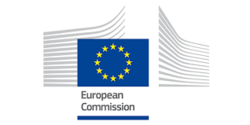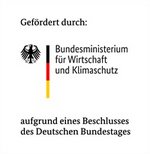Shape Adaptive Blades for Rotorcraft Efficiency (SABRE)

Shape Adaptive Blades for Rotorcraft Efficiency (SABRE) will develop ground-breaking new helicopter blade morphing technologies which will reduce helicopter fuel burn, CO2 and NOx emissions by 5-10%, while also reducing noise emissions. SABRE will help Europe achieve its ambitious aviation emissions goals while also sharpening its competitive edge in the rapidly growing international helicopter market. read more
Helicopter Shipdeck Operations (HELIOP)

Operating helicopter from sea-based platforms is a challenging endeavor due to different factors, like influence of the landing zone on pilot performance, limited field of view during landing maneuver, and degraded visual environment (DVE). To localize the moving restricted landing area and approach safe, pilots have to compensate ship motion in all axes and heave motions of the landing area, as well as ship forward speed and recirculating ship airwake. Different characteristics of Helicopter Shipdeck Operations (HELIOP) are under exploration at the Institute of Helicopter Technology due to different topics read more
Hubschrauber Einsätze in Offshore Windparks (HeliOW) im 6. Energieforschungsprogramm der Bundesregierung

In this joint project, the influence of offshore wind turbines and their wakes on the flight dynamics of helicopters operating in or near wind farms will be investigated. The results from piloted simulations will lead to a set of recommendations for safe flight procedures, regulations, and safety margins for operating helicopters in offshore wind farms. read more
Challenges in AeRoMEchanics (CHARME)

Aeromechanische Phänomene, d.h. aerodynamische Effekte und die sich daraus ergebenden Konsequenzen auf Rotor- oder Hubschraubersystemebene, gehören zu den komplexesten Zusammenhängen, welche die Flugleistung, Flugeigenschaften und den Betrieb eines Hubschraubers bestimmen. Übergeordnetes Ziel des Vorhabens Challenge in AeRoMEchanics (CHARME) ist es daher, die Fähigkeiten, das Wissen und die Mittel zu erlangen, um bereits in der Entwurfsphase des Hubschraubers abgesicherte Designentscheidungen zu treffen, wo dies heute noch nicht möglich ist. weiterlesen
Life-Cycle Bewertung des ökologischen Fußabdrucks von Hubschraubern im Vorentwurf (EcoDraft)

Ziel des Projektes EcoDraft ist die Bewertung von bestehenden und Auslegung von zukünftigen Hubschrauberkonfigurationen im Bezug auf Ökoeffizienz. Neben dem Verbrauch von z.B. Kerosin und den damit verbundenen Emissionen von klimawirksamen Gasen im Flug werden auch u.a. die Faktoren Materialbeschaffung, Produktion und Entsorgung sowie Lärmemissionen mit einbezogen. weiterlesen
Technologieentwicklung für Koaxiale Ultraleichte Hubschrauber / Coaxial Ultralight Rotorcraft Technology (CURoT)

Koaxiale Rotorkonfigurationen sind neben den klassischen Konfigurationen mit Haupt- und Heckrotor heutzutage meist noch eine Ausnahmeerscheinung. Und dies obwohl nicht nur meist für die Anwendung bei schweren Transporthubschraubern, sondern für beliebige Anwendungen unstreitig Vorteile im Hinblick auf die verbesserte Leistungsaufnahme durch wegfallen des Heckrotors und generell die leichtere Flieg- und Beherrschbarkeit im Vergleich zur Haupt-Heckrotorkonfiguration aufzeigbar sind. Darüber hinaus finden koaxiale Rotorkonfigurationen auch international in letzter Zeit immer mehr Zuspruch, wie beispielsweise an den Forschungsprojekten von Sikorsky gesehen werden kann. weiterlesen
High-Advance-Ratio Coaxial Rotorcraft Aeromechanics
Current vertical-takeoff-and-landing aircraft designs are generally a compromise between efficient hover performance and forward flight performance. With both high-speed capability and range being important future requirements, the aforementioned compromise is even more of a challenge. Fast edgewise flight of the helicopter is mainly limited by the asymmetric aerodynamics at the rotor disk and associated retreating blade stall.
Rigid rotors are one key technology enabler for coaxial rotor systems that are capable of high forward flight speed. The suppressed (or at least significantly reduced) flapping motion of the rotor blades allows for smaller rotor spacing and so for significant hub drag reduction.
Autonomous Rotorcraft for Extreme Altitudes (AREA)
The research project Autonomous Rotorcraft for Extreme Altitudes (AREA) is devoted to lightweight rotary wing UAVs for applications at high altitudes of up to 9000m, such as search and rescue as well as different types of environmental monitoring.read more
Fehlertoleranter Elektromechanischer Aktuator für zukünftige UAV (TEMA-UAV)

Im Projekt TEMA-UAV (Fehlertoleranter Elektromechanischer Aktuator für zukünftige UAV) wird in einem ganzheitlichen Entwicklungsprozess unter Berücksichtigung der luftfahrtspezifischen Regularien und Anforderungen ein innovativer, elektromechanischer Aktuator für unbemannte Luftfahrzeuge entwickelt. weiterlesen
ACTUATION 2015
Within the research project ACTUATION 2015 (Modular Electro Mechanical Actuators for ACARE 2020 Aircraft and Helicopter) the Institute of Helicopter Technology is working on the development and validation of a common set of standardised, modular and scalable Electro Mechanical Actuators (EMA). The research is coordinated by Goodrich Actuation Systems SAS and includes 54 partners. read more
Intended Single Engine Operation (ISEO)
Helicopters that are equipped with two or more turboshaft engines for safety reasons, mostly operate in part load conditions. As the specific fuel consumption is reduced with increasing engine load, shutting down one engine in suitable flight envelope areas would cut down fuel consumption significantly and reduce engine operating hours. read more
Real-Time Simulation of Rotorcraft Downwash
The goal of the project Real-Time Simulation of Rotorcraft Downwash is to develop and verify a model for real-time simulation of rotorcraft downwash in proximity of complex obstacles using grid-based approaches. read more
Synthetische Erweiterung der Flugumgebung in Helmsichtsystemen (SAFE HMD)
Für den Hubschrauberflug bei schlechten Sichtbedingungen werden visuelle Pilotenunterstützungssysteme am Lehrstuhl für Hubschraubertechnologie untersucht. Dabei werden dem Piloten über ein Head-Mounted-Display (HMD) 3D-konformale Informationen eingeblendet, um die verschlechterte Außensicht virtuell zu erweitern.
weiterlesen